I set three rules when it comes to visiting Adelaide. The first is to not ‘bag’ the city; the second is to always try to organise a round at Royal Adelaide. The first rule is easy to follow because I genuinely like the place. Haughty east coast residents and independently minded west coasters often miss the subtle charms Adelaide possesses. It melds city action with country allure, in a size and population that provides convenience without the frantic, hectic pace of a larger metropolis.
The second rule is easier to adhere to than many golfers realise, as there are several ways to secure a tee-time at ‘Royal’. And the third rule? To always make contact with Neil Crafter, the decorated amateur golfer-turned course architect whose fingerprints are all over the state’s best courses. His family is South Australian golf royalty and today few golf courses in the state undergo improvement work without at least consultation with Crafter, while his input has helped rejuvenate a handful of notable courses in recent years.
“I’m very proud of my heritage. I’ve been fortunate to be part of the ‘Crafter dynasty’, I guess, but there have been downsides too,” Crafter says, adding that some South Australian clubs feel a locally based course designer won’t ever cut the mustard.
“Adelaide, historically, has been the four main clubs and maybe we’re not a place that has built a lot of courses outside the city. But Dad [Neil’s late father Brian] and [uncle] Murray have done significant work on country courses.
“Golf in South Australia is in a reasonably healthy state. The number of rounds played has improved at clubs where they are being proactive … and the bringing of the Women’s Open has been important for golf in Adelaide.”
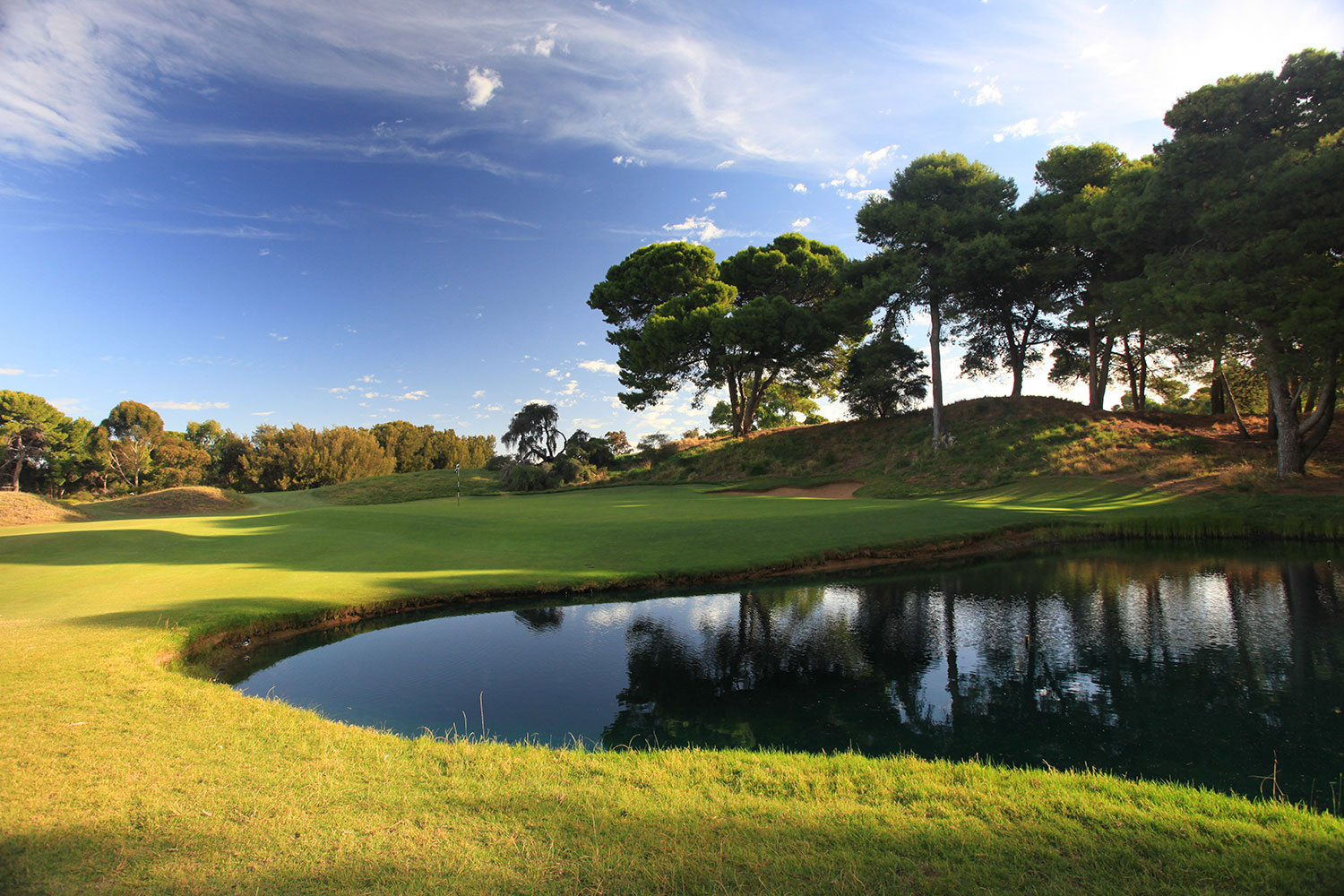
Very much so. Indeed, a combination of intertwined factors has turned the spotlight on Adelaide and the entire state’s golf offerings. No longer the nation’s ‘overlooked middle child’, the SA golf scene is savouring a boost in interstate golfer visitation, according to club general managers and professionals. Becoming the home city of the Women’s Australian Open began the heightened awareness, but so too has the annual day/night Test match each summer. Travelling spectators effectively have their mornings free before heading to Adelaide Oval, a perfect time to take in 18 holes before the cricket starts. Additionally, the innovative Four Reds concept has opened the doors to the city’s four elite but mostly private clubs.
 A golf trip to South Australia can also be whatever you wish to make it. The four leading clubs are conveniently located near each other, the CBD and the airport. You can confine yourself to just the city or, with extra time, take in more of the fine suburban layouts, venture north to the Barossa and Clare valleys and beyond to the Riverland region or south to the Fleurieu Peninsula. Stay a few days or a week or longer – you won’t be disappointed.
A golf trip to South Australia can also be whatever you wish to make it. The four leading clubs are conveniently located near each other, the CBD and the airport. You can confine yourself to just the city or, with extra time, take in more of the fine suburban layouts, venture north to the Barossa and Clare valleys and beyond to the Riverland region or south to the Fleurieu Peninsula. Stay a few days or a week or longer – you won’t be disappointed.
And there’s more to come. Kangaroo Island, already one of the state’s tourist hotspots, has an 18-hole course approved, while the stunning Nora Creina site on the coast near Robe will hopefully see 36 further holes added to the South Australian golf landscape in the years ahead.
More And More Open
Kooyonga Golf Club takes centre stage in February when the Women’s Australian Open descends on the South Australian capital, the third leg of a minimum three-year arrangement to host the tournament in Adelaide. After successful visits to The Grange and Royal Adelaide the past two Februarys, it’s now Kooyonga’s turn to shine (see Australian Golf Digest’s recent course review here).
Under the watchful architectural eye of Crafter, the golf course has received a few tweaks that have improved the strategic values of the design and its aesthetics, returning parts of it to the look the site had in the 1920s when the Cargie Rymill-designed layout first opened for play. Gone are some of the superfluous vegetation and a smattering of trees that created congestion, while others – mostly judiciously positioned pines – are new additions. Several attractive sandy waste areas between holes were reintroduced, rekindling a handful of nice vistas of the gently undulating layout. Crafter added a smattering of new bunkers to strengthen the challenge, including in the left side of the lay-up zone on the par-5 first hole and the right side of the driving zone at the
par-5 16th, but overall the tweaks are just that – mild modifications rather than a full-scale overhaul.
Kooyonga is better for the changes and the course will continue to undergo several more under the club’s strategic plan (next up is a rebuild of the green on the long par-3 15th) as it strives to both reflect its historic roots and be the best golf course it can be.

If Adelaide is the ‘city of churches’, then Royal Adelaide Golf Club is its cathedral. The revered course has undergone some refinements in recent years – a common theme across the city’s leading layouts – but the soul of the place remains. A new 17th hole, ripe with controversy initially, has been revised to resolve any architectural shortcomings. Likewise, a handful of Tom Doak-advised alterations have been implemented to subtle but fine effect.
And Royal Adelaide is more accessible than many interstaters might think. The Four Reds campaign, which unites rounds at Royal Adelaide, Kooyonga, Grange and Glenelg golf clubs – along with a post-round sampling of four of South Australia’s finest red wines – is one way non-members can experience the best in Adelaide golf with an added vinous bonus.
Aside from being a vast and wonderful course, the best aspects of playing golf here are the moments in the round that are unique to Royal Adelaide. Things such as crossing the (still-in-use) suburban railway line twice during the round, tackling the simple but magnificent short par-4 third hole, the majesty of the green site at 11th hole with its sandy amphitheatre and many more.
The club hosted the Women’s Australian Open a year ago, won by effervescent South Korea Ha Na Jang, as part of its 125th anniversary celebrations. After a frenetic year of tournaments, events and celebrations, Royal Adelaide is now enjoying a quieter period when members can simply appreciate their facilities, meaning there’s never been a better time to visit.
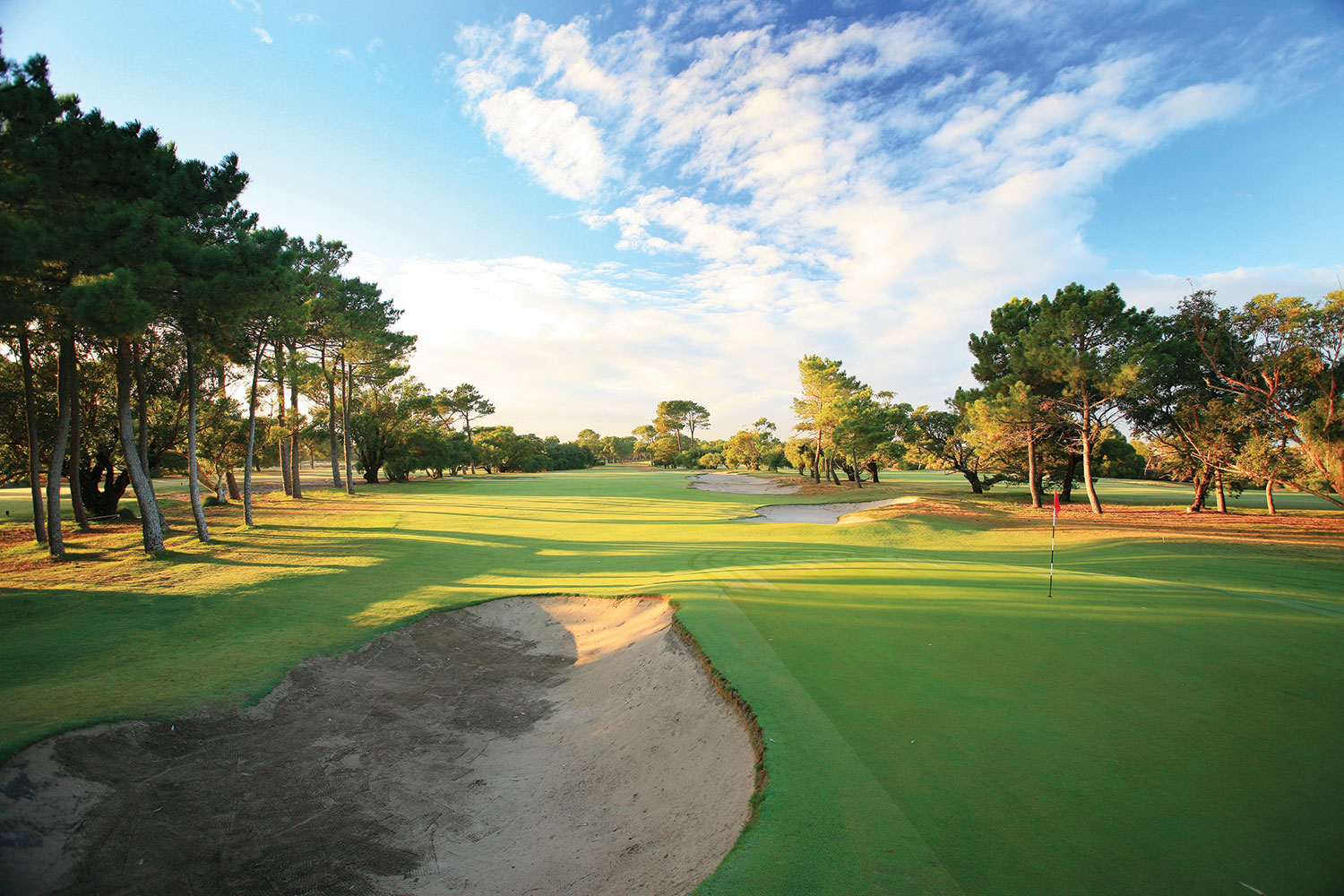
The Grange Golf Club is one of those clubs welcoming an uptick in interstate visitors. Long-time Grange general manager Barry Linke attributes the rise to the Four Reds initiative plus the exposure brought about by hosting the Women’s Australian Open in February 2016.
Grange’s natural advantage is having two courses, both of which have been redesigned in the past decade. The West, the layout used for the Women’s Open, was opened up and revitalised by Mike Clayton in time for the club’s co-hosting of the 2008 Eisenhower Trophy. Five years later, favourite son Greg Norman conducted an overhaul of the East course where he claimed his first professional title in 1976.
Linke says there’s been an ebb and flow to which course is most popular, but today there’s almost equal member traffic across the two. The redesign of the East course spurred the membership to take it on a little more often than the West, but conversely the West course hosting the Women’s Open prompted a shift back towards it. The East is viewed as more difficult, although the West is not without its own brand of might. A good friend of mine was a Grange member during his formative years and said many a promising round was brought undone by the West’s potent final four holes.
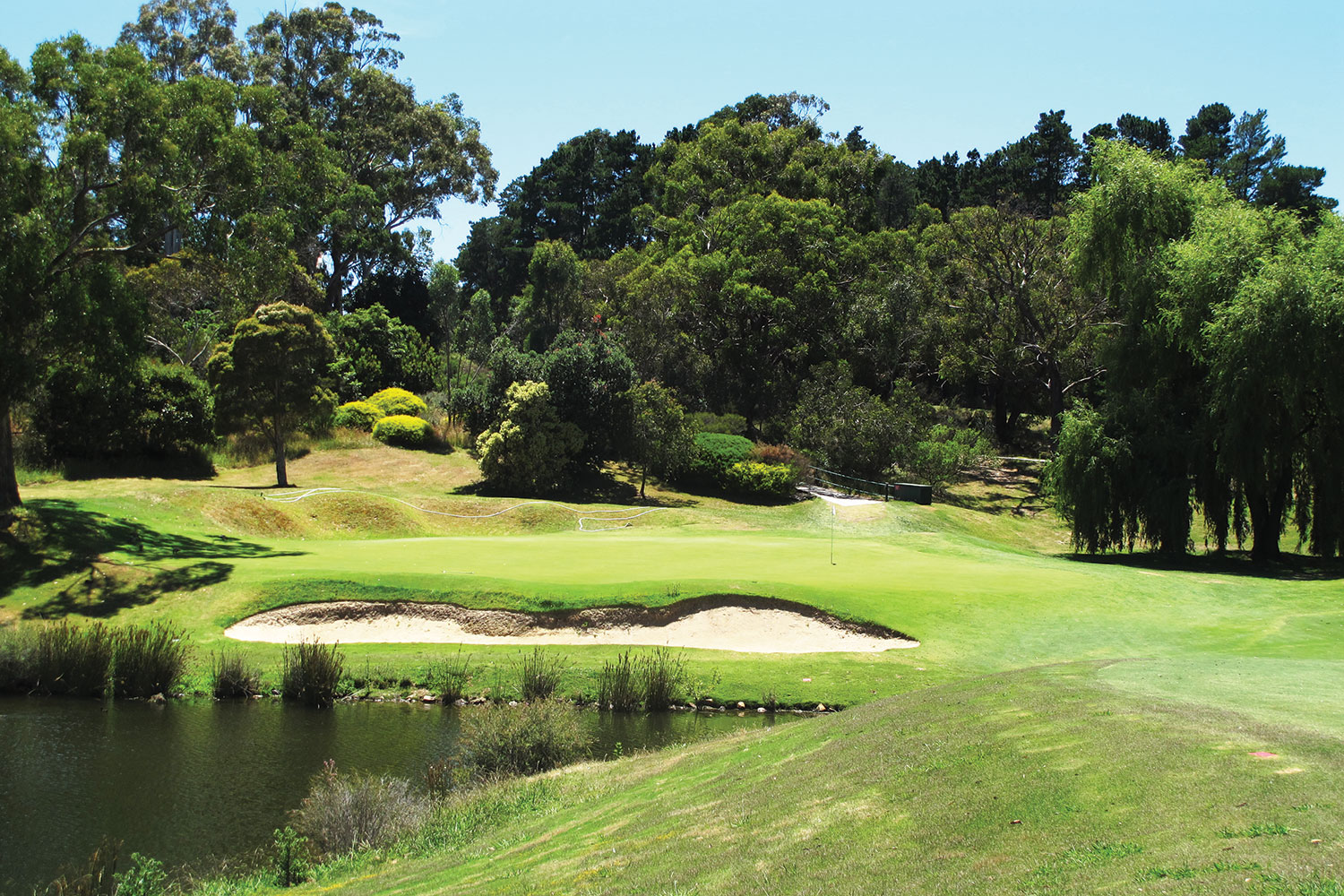
Both courses are perennially in tremendous shape, and visitors with the opportunity to play the pair will notice the subtle differences between the two layouts. Clayton made a point in his redesign of the West of broadening the playing lines and having the flag visible from the tee on every hole. The space is acutely apparent but the superior angle to the green invariably requires golfers to take the more daring line from the tee. The bunkering is a highlight, as it is on the East, although there’s a different style across the two courses.
Norman’s new-look East added some ‘oomph’ to the course and while highly playable from most sets of tees, it does become a brute from the back markers. The front nine of the East takes in the wetlands area that is a feature of the eastern side of the property, but it’s the back nine where the course builds to a crescendo. There are cavalier options to be taken for the brave golfer throughout, yet the East’s shortest hole might be its best. The tiny, 111-metre 15th features a multi-segmented green protected by swales and sand in a true death-or-glory moment late in the round.
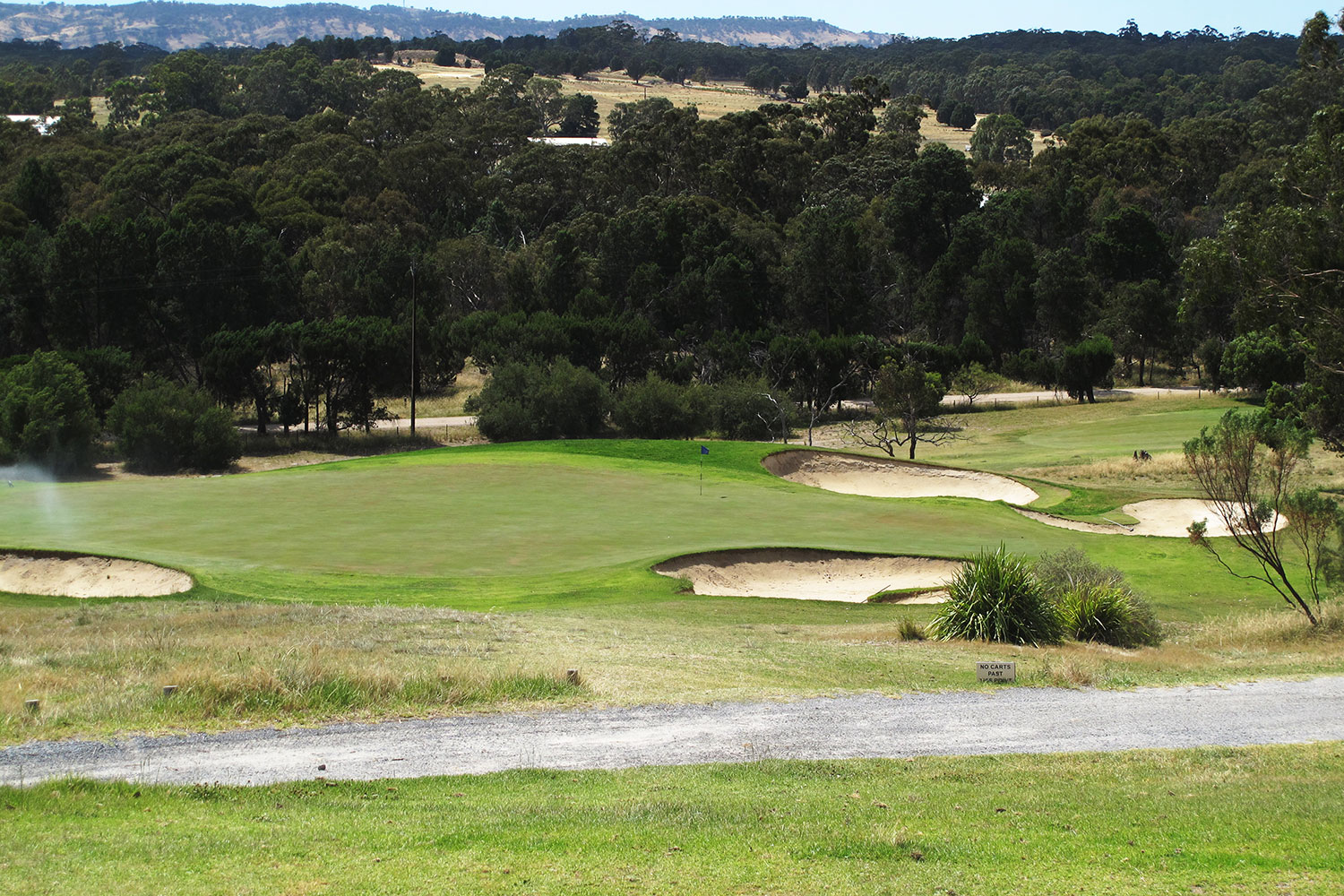
If there’s any justice, Glenelg Golf Club will get its moment in the spotlight as host of the Women’s Australian Open. The other member of Adelaide’s ‘Big 4’ courses is the only one yet to host the event, but the compact site on the southern side of the airport faces a few more off-course logistical issues when it comes to the space required to host a top-line professional tournament.
Based on the course alone, however, it’d be next in the queue. Glenelg’s most striking feature is its revetted bunkers, which hark back to the great links courses of Britain and fit beautifully with the sandy terrain of the site. These bunkers are true hazards and compiling a good score generally means avoiding as many pots as possible. In the past few years, the club has consolidated its bunkering in places, rebuilding several to fortify them and to reduce maintenance time – but in each instance with Crafter’s blessing and with no sacrifice to their architectural merit. In most instances one larger bunker has become two smaller ones, reducing the likelihood of sand loss due to wind and other environmental factors.
The Glenelg design is a gem, an excursion through stands of pines on sandy land and past the many circles of sand-riddled doom. Glenelg also recently unveiled a 19th hole, a little par 3 in a triangle of the golf course bound by the third green and fifth and sixth fairways. The hole looks like it’s always been there and is a hit with the members while giving the club the chance to rest or work on a hole while maintaining a full 18.
Across the course are opportunities to take on some brave carries or a more conservative path. A wetlands scheme comes into play at the delightful par-3 16th hole, while a strong par-4 17th and birdieable par-5 18th close the round. Such a finishing stretch is worthy of a significant tournament – and hopefully in the coming years Glenelg will get that chance.
On A High
Golf in Adelaide is not all about the Big 4. The city is blessed with a collection of fine suburban layouts. One of the best lies on the south-eastern fringe at Blackwood Golf Club. A semi-rural setting and a location that’s rich in natural features has given rise to a course that’s endlessly enjoyable for members and a good test for both a first-timer and the repeat visitor.
The land offers great movement, with several spurs and ridges defining the fairways to give many holes interesting and demanding contours. Most are lined by stands of towering pines or gum trees, although importantly in most instances the foliage stops well before the green sites, meaning the most delicate grass of all is not excessively shaded. One of the best holes is the par-5 15th, which rises, falls and curves with the terrain before reaching a perched green protected on the left by a lake and a bunker and on the right by a deep swale. The next is a tough par 4 that doglegs sharply left around a bushy chasm with a fairway that’s cambered so balls want to retreat towards the trouble. Only a drive hit far enough up the ridge will open the way towards a green framed by a pair of deep bunkers on either side.
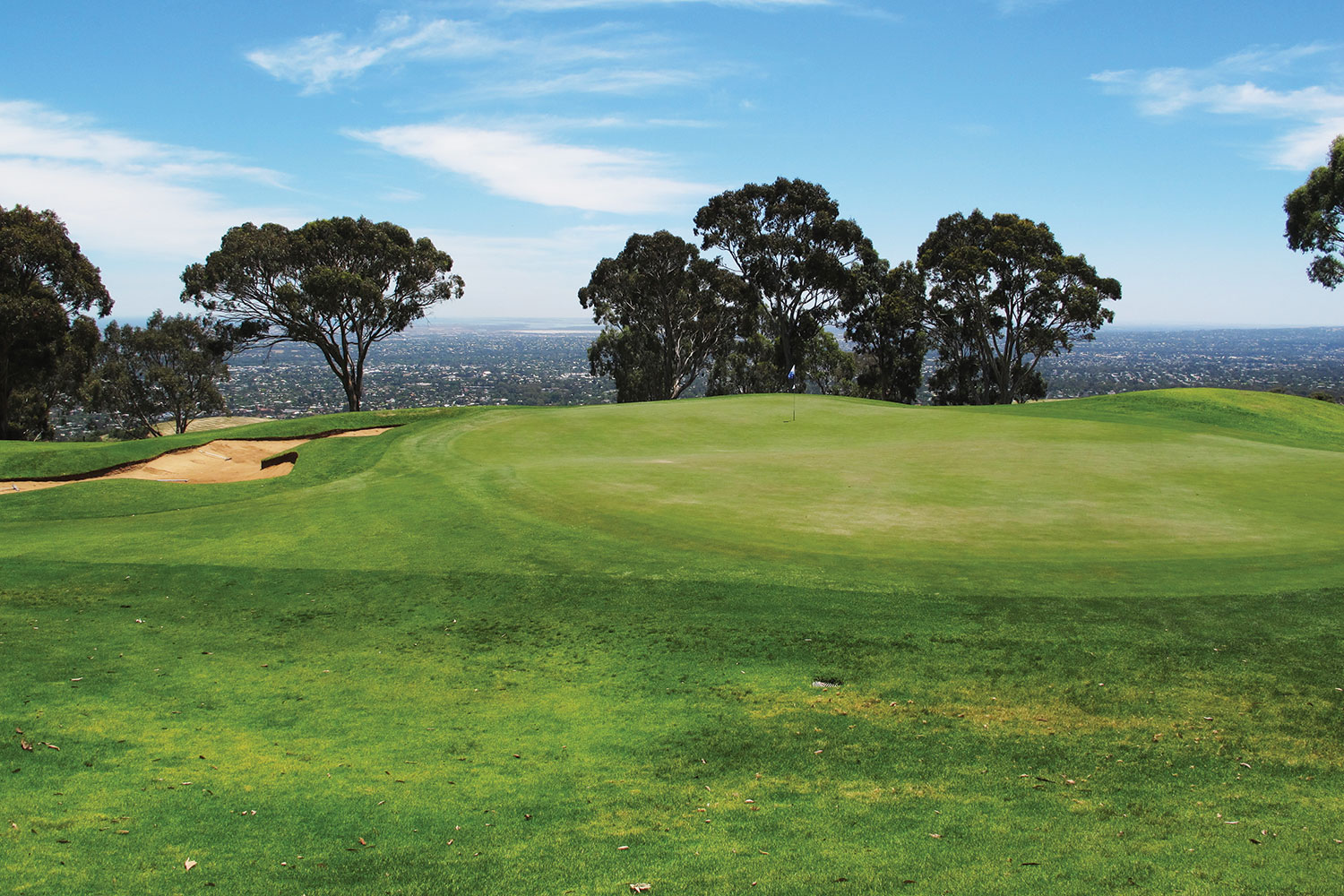
A little closer to town, Mount Osmond Golf Club offers golfers the best views in Adelaide. Set above the eastern side of the city, it’s not hard to figure out where the ‘Mount’ in Mount Osmond comes from. Throughout the round is a series of lookout-style views of the city and Gulf St Vincent, especially late on the front nine.
Not that Mount Osmond is a one-trick pony. In between the vistas, you need to keep your head down to ensure the course doesn’t eat you alive. It’s tight, sloped and offers little to no respite across its 5,567 metres. Many of the fairway bunkers are deep and the canted landing areas can push balls into places where you either don’t want to venture or wouldn’t bother. The kikuyu fairways are kept tight rather than spongy, while it takes a keen eye to decipher the slopes. There is an abundance of uphill, downhill and sidehill lies to conquer and once the target has been found, often the greens break in a manner that doesn’t match the lie of the surrounding land.
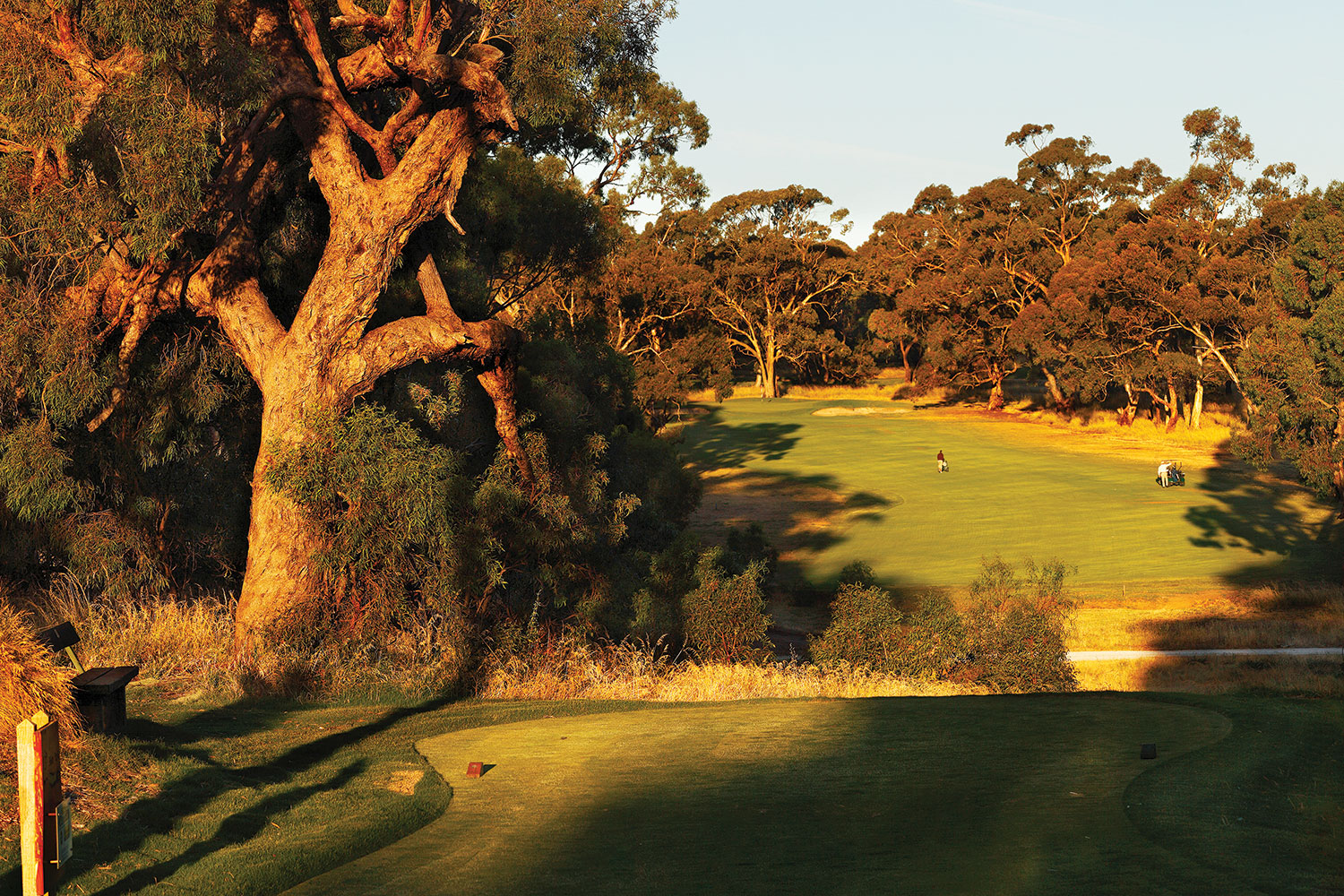
Valley Vibrancy
Whether you venture north to the Barossa and Clare valleys or south of Adelaide towards McLaren Vale, there’s plenty to tempt and excite outside the city. World-renowned wine regions pair with top-class restaurants and other attractions in an easy drive from the CBD. It’s not unusual for golf groups, couples or social clubs to venture out of town in multiple directions for their golf fix.
In the Barossa, Tanunda Pines Golf Club is regarded as the pick of the courses, but the club confesses that up until a few years ago it had a reputation for being a fine layout in substandard condition. A concerted effort in recent times to enhance the playing surfaces has borne fruit. Visitors are so taken by the course that they’ll often favour playing it twice over some of the area’s other layouts.
“The whole philosophy behind this course is understanding where we fit in the marketplace. We’re certainly not the best in the state, but we make every effort to be the best at what we do,” says general manager Chris Crichton, adding that the club still holds aspirations for further improvements. “We fit into the marketplace. We’re not trying to be something we’re not, but we set ourselves a benchmark on the top-four down in Adelaide and we strive to offer a similar service and provide a premium quality course and facility that golfers can enjoy in a region which is renowned for wines. It goes hand-in-hand – we’ve got great wines, why not offer great golf too?”
A club with a rich history, Tanunda Pines’ present chapter really began when Murray Crafter redesigned the course in the mid-1990s. He expertly utilised the landform and weaved holes between the weathered, gnarly, centuries-old gum trees to conjure a layout that asks for a range of shot shapes, making it a true ball-strikers alley.
The ancient gums amid the fulsome stands of trees are eye-catching, but the contours on and around the greens are what keep Tanunda Pines compelling round after round. Many greens have tiers and spines that make approach shots, all greenside plays and putting a constant challenge.
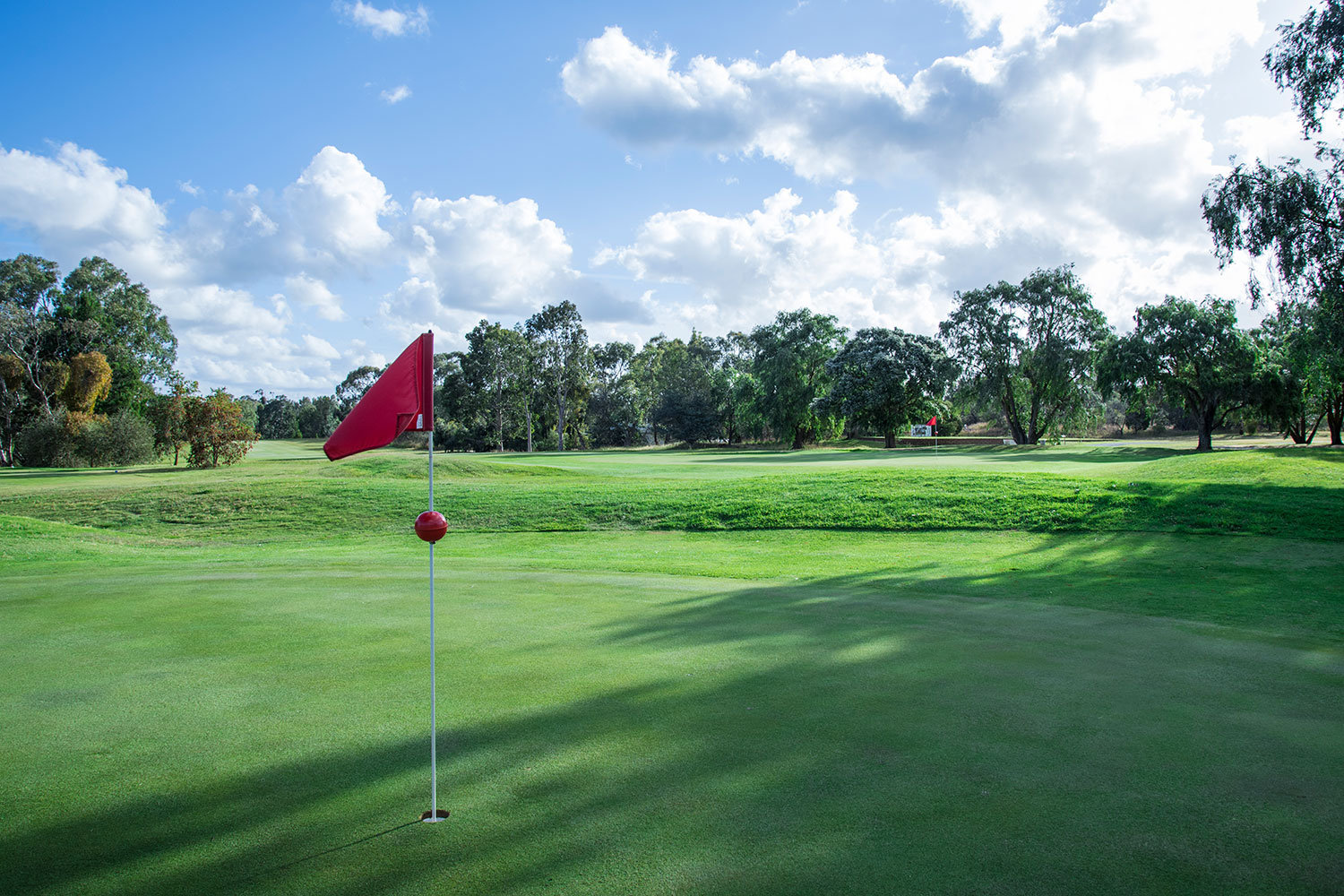
Two neat and tidy layouts sit nearby that are well worth a look: Barossa Valley Golf Club and Sandy Creek Golf Club. The Barossa Valley layout has an interesting history that included being a sandscrapes course until 1992. It’s one of those country tracks that attracts Adelaide golfers seeking to get away for a week or a weekend for a combination of golf and winery visits. Being a comfortable 70-minute drive from the city adds to the convenience, but the lure of the golf on offer definitely helps.
The design includes five par 3s and five par 5s; the former group offering much of the challenge and the latter most of the opportunities to score. That said, there’s a treacherous green waiting at the end of the 477-metre fifth hole, the tilt of which has been known to produce many a four and even five-putt from the members. Barossa Valley is a course with more ‘bite’ than an initial look reveals.
Sandy Creek changed its name from Gawler Golf Club in 2015 based on geography and to better reflect the broader Barossa region. “We made it a matter of priority to get the change through in order to just bring a bit more clarity around our location, and also really capitalise on the Barossa brand and the Barossa tourist destination,” club manager David Rice said at the time.
The course is another surprisingly good rural layout. There’s a modest undulation to the land, which is incorporated smartly within the design. The steepest grade occurs at the short sixth hole, a 114-metre par 3 with a 10-metre descent to the green. The putting surface is broad but comparatively shallow, plus it is ringed by bunkers and vulnerable to any breeze.
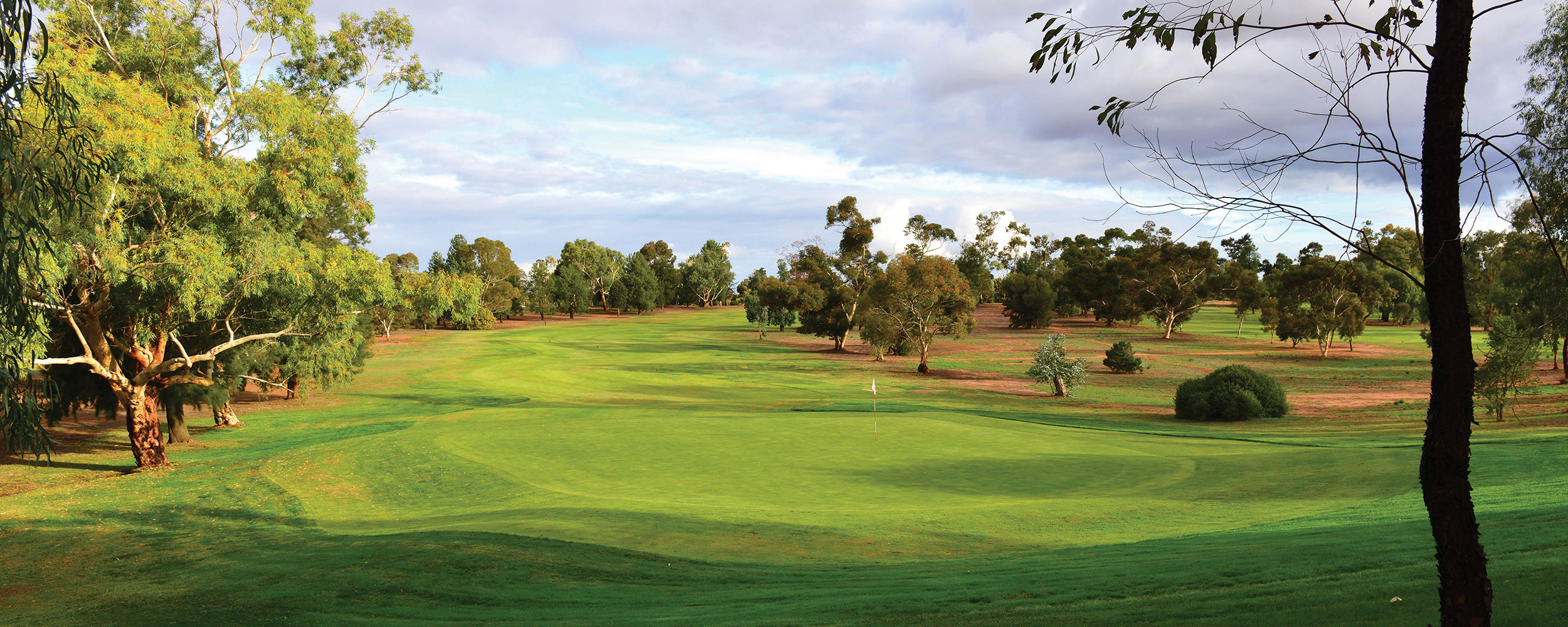
There’s an oasis-like region of South Australia where orchards and grape vines sit side-by-side near the Murray River. The fertile soil and proximity to the river that is such a benefit for agriculture has also given rise to a series of fine golf courses. The pick of the Riverland layouts is arguably Waikerie Golf & Country Club, which sits just outside the town of the same name. The course was originally established in the 1960s on a vacant wheat paddock in the area known locally as Sunlands. Re-designed to its current layout by Brian Crafter in 1969, with oiled sandscrape putting surfaces, it was eventually planted by a team of dedicated local volunteers over the long hot summer of 1987. Today it boasts lush green fairways contrasted by its rich red sand.
There are no bunkers and no water hazards at Waikerie, but a sneaky number of holes feature out-of-bounds and all the greens feature false edges to have them play smaller than they look. Instead of hazards, the course staff leave the rough long once the ball trickles several paces off the green. The club also adds a unique touch with a mown strip of fairway that extends from the rear tee of each hole to the start of the fairway.
Worth considering as a rest point is the sparkling new villa accommodation beside the 10th fairway, which includes one large villa with a huge modern common room and multiple bedrooms encircling a central courtyard that’s ideal for groups. Waikerie executive director Julie Steinert tells a story of one collection of golfers from Grange Golf Club who added a day to their stay because they walked off the golf course saying, “We need another round here because we’re not going to let this course beat us!”
One challenger to the ‘best in the Riverland’ mantle is Renmark Golf Resort, which is proud to be one of the area’s top golf, dining, function and short-break destinations. The course marries the contrasting features of being a lush oasis amid the surrounding orchards with a semi-arid landscape visible beyond the fairways. A parkland haven, golfers visiting Renmark can expect to play a balance of holes set in flat, tree-lined country and the remainder cresting gently rolling undulations. Renmark is widely acclaimed for its long, tight couch fairways and manicured greens with established pines, flowering gumtrees, natives and mallee trees bordering most fairways.
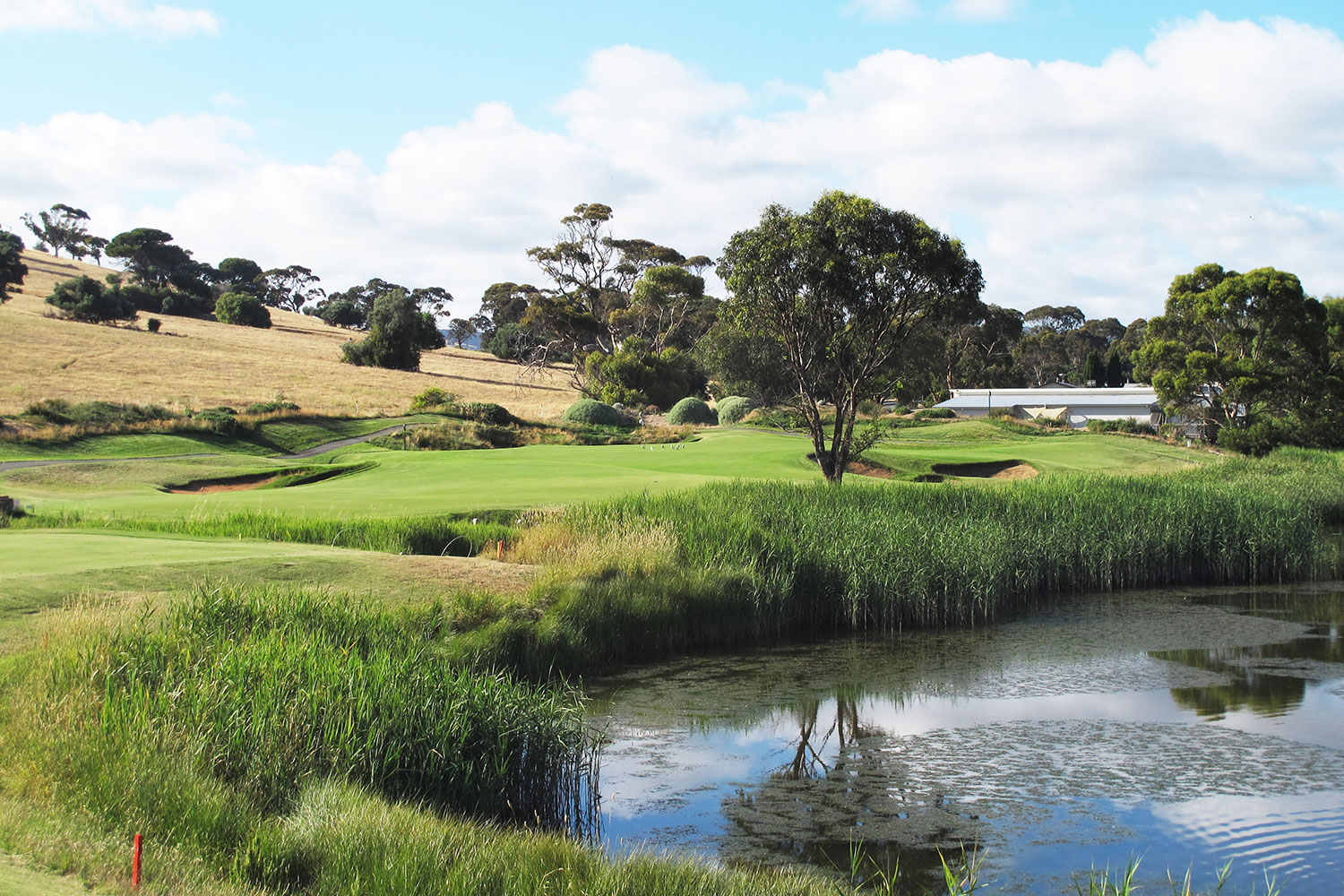
Depth In The South
The Fleurieu Peninsula, little more than an hour’s drive south of Adelaide, is as enchanting and beautiful as its name. The pointy part is the gateway to Kangaroo Island but the entire protrusion of land is home to a smattering of delightful towns and clusters of wineries – and pockets of golf courses.
The pick of them remains Links Lady Bay, the turn-of-the-millennium design collaboration between Jack Newton, Graeme Grant and the late John Spencer. Blessed with multiple natural advantages, the course has grown to include a significant but not intruding residential estate plus holiday apartments, a hotel, restaurant, bar and full resort facilities. It’s a terrific place to base yourself for a full-scale assault on the golf courses of the Fleurieu.
You would start, of course, at Lady Bay, which is still one of the state’s – even the country’s – more underrated layouts. The high-quality design uses the natural shapes of the land astutely. The holes constantly change direction, a trait that becomes more noticeable in a stiff coastal breeze, and the parcel of land hidden from view that comprises holes 13 to 17 offers a nice contrast to the rest. One piece of advice: play early if you can, because it can be a bear in the wind.

The course has at times owned a chequered reputation based on its condition, but is most certainly in peak shape this summer. The natural, windswept bunkers are not to be messed with but the consistency of the sand at the base of these ravenous pits makes successful escapes more viable than first impressions might allow. And there are several holes that tempt every time. I’ve always liked the short par-4 fourth hole with its hillside setting and quaint little burn fronting an L-shaped green. The par-5 seventh is short but guarded by water on the second and third shots, so much so that playing a safe lay-up shot isn’t straightforward. Around the back, the 14th is a strategic gem with water again in play as much as you’re prepared to let it be.
The Fleurieu course boasting most change is Mount Compass Golf Course. Formerly known as Fleurieu Golf Course, the place has a new owner, Adelaide town planner and project manager Stephen Connor, a new approach and a new direction. As Connor notes, the region has so much to offer – world-class wines, food, tourist attractions and convenient proximity to Adelaide – there is no reason why golf can’t become an equal drawcard.
And he’s right, particularly given what’s on offer at Mount Compass. Design-wise, the body of work is a combination of Neil Crafter and his late father Brian (there’s that Crafter name again). The pair penned the front nine in collaboration with Neil devising the back nine on his own. These days, Neil is in constant consultation with the club as it strives to maximise its considerable potential.
The layout gets right the crucial mix of being a constant challenge for expert players yet entirely playable for novices. It’s a tidy, links-style layout with a distinct Sandbelt approach to much of its bunkering, where heather, ferns and other attractive foliage hems the non-fairway/green side of the hazards. The course meanders around a central ridge where the clubhouse sits, with holes touching all points of the, ahem, ‘compass’. Two in particular stand out, the intriguing par-4 sixth where carrying a lateral hazard is required from the tee but it’s up to the player to decide how much to bite off, and the demanding par-3 12th with its broad green that pushes towards a lake on its right edge. The tough par-4 11th also deserves praise for the way it trundles down a hillside towards a green that welcomes approach shots bouncing from the left.

Down the road, Victor Harbor Golf Club owns arguably the most famous first tee shot in Australian golf. Play begins from a compact tee beside the clubhouse, dropping steeply towards the narrow ribbon of fairway far below and the southern coastline in the distance. Depending on the weather, the time of day or just the changing light, the hues in the ocean appear to change – much like golfers’ fortunes from that opening blow.
Victor Harbor is one of a few South Australian towns to reject the ‘u’ in ‘Harbour’ for reasons that confuse anyone with a literary bent. Golfers, however, will miss out if they reject the chance to tour the Victor Harbor layout. The course is as playable as it is enjoyable. Established lines of trees flank all 18 holes and a handful retain a tree or two in strategic positions to be an annoyance to golfers who stray offline. Other aspects of the layout impress. Country courses dealing with challenging climates and minimal resources often struggle with the condition of their bunkers, yet Victor Harbor’s sand traps are in amazing condition, a reflection of the entire course.

Ten minutes away sits a course to contrast the rest. With several narrow, tree-lined courses in the region, McCracken Country Club offers some respite by welcoming golfers with plenty of space. The whole place is big: big fairways, big sprawling bunkers and large greens. If you’ve felt a little cramped by the courses explored so far, McCracken provides that long-awaited chance to open the shoulders.
The site is hilly and exposed with only a sprinkling of trees on the periphery of play. The room to move might be ample, but you still need some guile to conquer the course. With big greens comes the need to accurately park iron shots in the correct section of the putting surfaces, otherwise snaking 60-footers become the order of the day. The uphill, par-5 fourth hole, for example, has three tiers and one would not want to be putting from a high tier to a lower one.
The good news is designer Tony Cashmore was feeling generous when he penned the par 5s. There are five of them and none touches the 500-metre mark from the back tees and two only just nudge past the 450 barrier. The 6,066-metre layout is far from a pushover but it does provide a nice point of difference from many of the other courses on the peninsula.
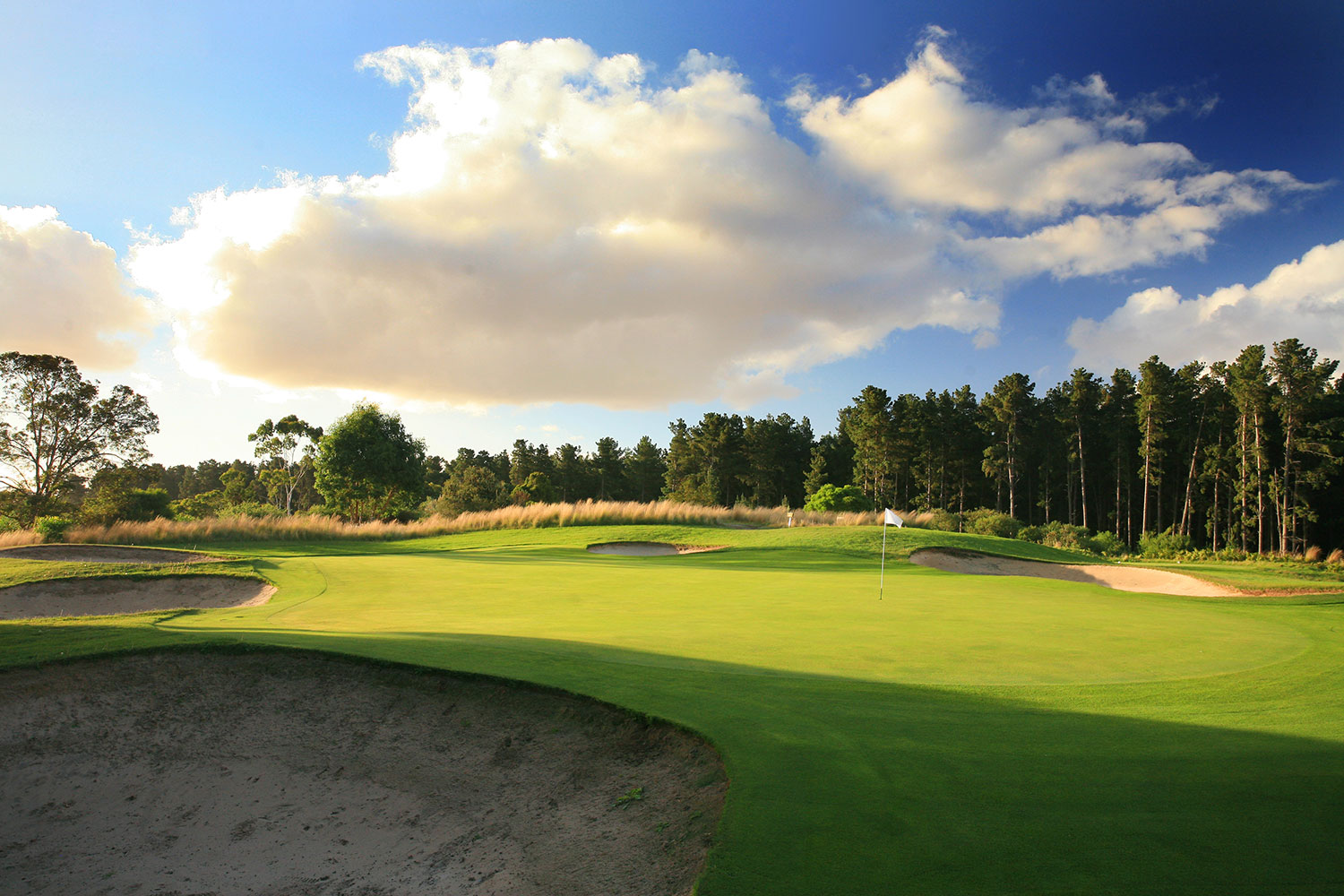
Farther south on the Limestone Coast is another top course worth the time to reach. Mount Gambier Golf Club represents an ideal stopover point for golfers travelling between Melbourne and Adelaide, sitting a four-hour drive from both capitals.
In the past five years Mount Gambier has gone about removing more than 200 ageing cypress pines from the course, while also installing a new automated irrigation system. Most recently the club engaged Neil Crafter’s company to develop a course enhancement plan to further refine the already impressive layout. Much of the plan centres on improving the playing surfaces – Santa Ana couch fairways and bentgrass greens – and simultaneously making the course more relevant to modern technology while staying an enjoyable experience for social golfers. This required widening the fairways, reducing several carries from tees and removing bunkers deemed to be in irrelevant areas of play but replacing them in locations designed to test low handicappers.
Like the rest of the state, the Mount Gambier region boasts a host of tourist attractions, including robust dairy and seafood industries but most notably Blue Lake, a dormant volcanic lake that changes colour with the time of year. The summer months see it reveal a brilliant cobalt blue hue or a grey look for much of the rest of the year.
Changing seasons, changing colours. South Australia wears many fancy outfits but always backs it up with substance to match its style, no matter when you choose to visit.

